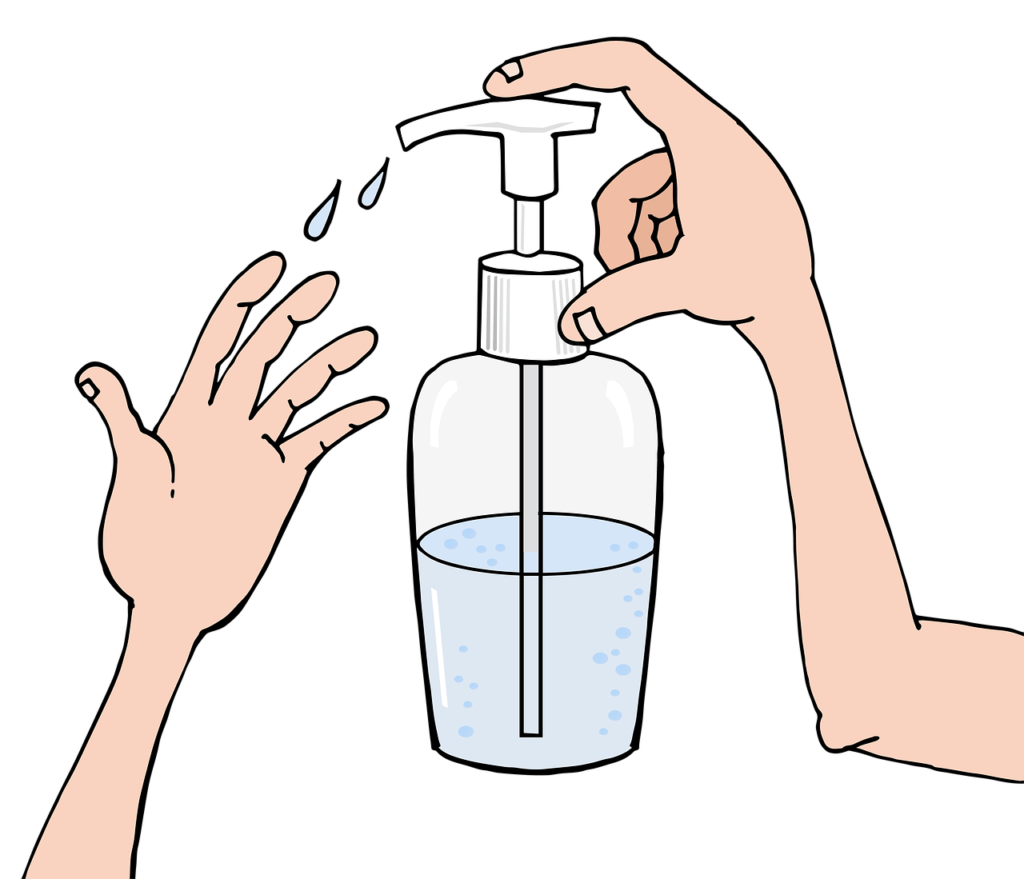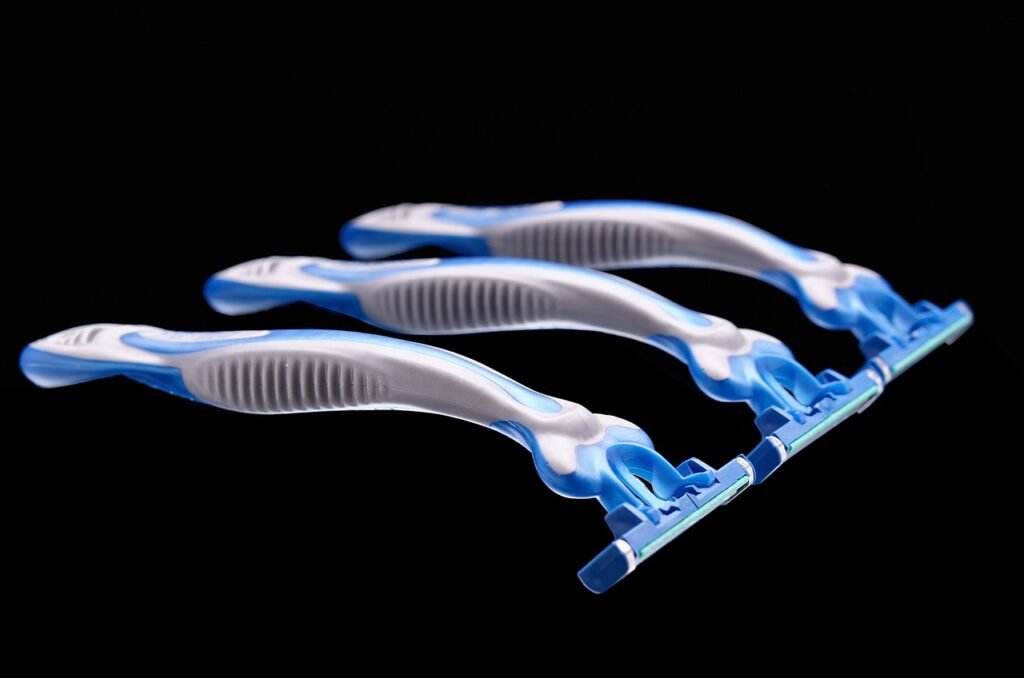
In need of some tips to make your bathroom a safer space? Look no further than “Bathroom Safety: A Complete Guide.” Packed with essential information on how to prevent accidents and minimize risks, this comprehensive guide is your go-to resource for creating a secure and worry-free bathroom environment. From installing grab bars to choosing slip-resistant flooring, you’ll find practical advice that will help ensure everyone’s safety in one of the busiest rooms in your home. Whether you’re a parent concerned about your child’s safety or an individual looking to enhance accessibility and reduce hazards, this guide has got you covered. So, let’s dive into the world of bathroom safety and embark on a journey towards a secure and comfortable space for all. Bathroom Safety: A Complete Guide
As you go about your daily routine, ensuring the safety of your loved ones is of utmost importance. And when it comes to the bathroom, taking proactive measures to prevent accidents is crucial. Slip and fall accidents, especially among children and elderly individuals, are unfortunately common in bathrooms. But fear not, because in this comprehensive guide, we’ll cover all the essential tips and precautions you need to take to create a safe bathroom environment. From slip and fall prevention to childproofing, accessibility, preventing burns, proper ventilation, storage safety, maintaining cleanliness, preventing drowning, emergency preparedness, and aging in place, we’ve got you covered.
Slip and Fall Prevention
One of the biggest concerns in the bathroom is slip and fall accidents. To ensure the safety of everyone using the bathroom, here are some steps you can take to prevent such accidents.
Install Non-slip Flooring
Investing in non-slip flooring is a wise decision when it comes to bathroom safety. Choose flooring materials that offer good traction even when wet. There are various non-slip options available, such as textured tiles or rubber flooring. By installing non-slip flooring, you significantly reduce the risk of slipping and falling.
Use Non-slip Bath Mats
In addition to non-slip flooring, placing non-slip bath mats on the bathroom floor and inside the shower or bathtub adds an extra layer of safety. These mats provide stability and prevent slipping, even on smooth surfaces. Make sure the bath mats have suction cups to hold them securely in place.
Secure Grab Bars
Grab bars are essential in helping prevent falls, especially for elderly individuals. Install sturdy grab bars near the toilet, bathtub, and shower areas. These bars provide support and stability, making it easier to sit down, stand up, and move around the bathroom safely. Consider choosing grab bars that are specifically designed for wet environments and can support the weight of an adult.
Install Handrails
Handrails, similar to grab bars, are an excellent addition to enhance bathroom safety. Install handrails along the walls, providing a secure surface to hold onto while walking in the bathroom. Handrails can help maintain balance and prevent falls, especially when stepping in or out of the shower or bathtub.
Ensure Proper Lighting
Proper lighting is vital to maintaining a safe bathroom environment. Ensure that the bathroom is well-lit, especially at night or in the case of early morning bathroom visits. Install bright LED lights or consider using nightlights to prevent any accidents due to poor visibility.
Childproofing
When it comes to bathroom safety for children, there are specific precautions you need to take to prevent accidents. Childproofing your bathroom is essential to create a secure environment for your little ones.
Lock Medicine Cabinets
Medicines should always be kept out of reach and sight of children. Install childproof locks or latches on medicine cabinets to prevent curious little hands from accessing potentially harmful substances. Remember to store medications in their original child-resistant packaging.
Keep Cleaning Supplies out of Reach
Cleaning supplies and chemicals should be stored securely in childproof cabinets. Even household cleaning agents can be dangerous if ingested or touched by children. Make sure all hazardous substances are stored beyond the reach of small children.
Use Toilet Seat Locks
Toilets can pose a drowning risk for small children. Use toilet seat locks to prevent accidental drowning or the risk of children inserting objects into the toilet. These locks ensure that the toilet lid remains securely closed when not in use.
Cover Electrical Outlets
Children are naturally curious and may try to explore electrical outlets using their fingers or objects. To prevent electrical accidents, install outlet covers on all electrical outlets in the bathroom. Outlet covers should be designed specifically to prevent tampering by children.
Remove Slippery Bath Toys
While bath toys can make bath time more enjoyable, they can also pose a slipping hazard. Remove any bath toys that are too slippery or have hard edges. Opt for bath toys with non-slip surfaces or those specifically designed to ensure safety.

This image is property of pixabay.com.
Accessibility
For individuals with limited mobility or disabilities, ensuring bathroom accessibility is crucial. Here are some steps you can take to make your bathroom more accessible and user-friendly.
Consider a Walk-in Bathtub
A walk-in bathtub provides easy access for individuals with mobility challenges, making bathing safer and more comfortable. With a low threshold and built-in seating, walk-in tubs eliminate the need for stepping over the edge, reducing the risk of falls.
Install a Raised Toilet Seat
For individuals with difficulties sitting or standing, installing a raised toilet seat can greatly improve accessibility in the bathroom. Raised toilet seats increase the height of the toilet, making it easier to sit down and stand up.
Use a Shower Chair or Bench
If standing in the shower is challenging, consider using a shower chair or bench. These provide a stable seating area while showering, ensuring safety and comfort.
Add Grips to Faucets
For individuals with limited hand strength or dexterity, adding grips or lever-style faucets can make it easier to control the water flow. These modifications reduce the risk of slips and falls due to excessive force or difficulty in turning the faucet handles.
Purchase a Toilet Safety Frame
A toilet safety frame provides additional support for individuals with balance issues or mobility limitations. These frames can be attached to the toilet and offer sturdy armrests to hold onto while sitting down or standing up.
Preventing Burns
Hot water and other heat sources in the bathroom can cause burns. Taking preventive measures is crucial to avoid such accidents. Here are some steps you can take to prevent burns in the bathroom.
Set Water Heater Temperature
Ensure that your water heater is set to a safe temperature to prevent scalding. The recommended temperature is typically around 120 degrees Fahrenheit (48 degrees Celsius). If your water heater does not have a temperature control setting, consider installing a temperature-regulating valve.
Test Water Temperature
Before stepping into a bath or shower, always test the water temperature to avoid scalding accidents. Use your wrist or elbow to check the water instead of sensitive areas of the skin, as they are less heat-sensitive.
Use Anti-Scald Devices
Anti-scald devices, such as thermostatic mixing valves or pressure-balanced valves, can regulate water temperature and prevent sudden temperature fluctuations. These devices maintain a consistent water temperature, reducing the risk of scalds.
Install GFCI Outlets
Ground Fault Circuit Interrupter (GFCI) outlets are designed to protect against electric shock. Make sure all outlets in the bathroom are GFCI-protected, especially those near water sources. GFCI outlets automatically shut off the power when they detect a change in electrical current, helping prevent electrical accidents.
Keep Candles and Flames at a Safe Distance
If you enjoy using candles or other open flames in your bathroom, ensure that they are placed at a safe distance from flammable objects. Keep them away from towels, curtains, or other potentially combustible materials to prevent accidental fires.

This image is property of pixabay.com.
Proper Ventilation
Proper ventilation can help maintain a clean and healthy bathroom environment. Here are some tips to ensure adequate ventilation in your bathroom.
Ensure Adequate Airflow
Good airflow is essential to prevent moisture buildup, which can lead to mold and mildew growth. Make sure your bathroom has proper ventilation to allow air to circulate freely. If your bathroom does not have a window, consider installing an exhaust fan or using a dehumidifier.
Clean Bathroom Fans Regularly
If your bathroom is equipped with an exhaust fan, regularly clean the fan blades and the vent to ensure optimal performance. Dust and debris can accumulate over time, reducing the effectiveness of the fan in removing moisture and odors from the bathroom.
Check for Mold and Mildew
Regularly inspect your bathroom for any signs of mold or mildew. These can thrive in damp environments and pose health risks. If you notice any mold or mildew growth, take immediate action to remove it and address the underlying moisture issue.
Use Exhaust Fans When Showering
When showering, turn on the exhaust fan or open a window to vent out the steam and excess moisture. This helps prevent condensation on the walls, ceiling, and other surfaces, reducing the likelihood of mold growth.
Keep Shower Curtains and Liners Dry
After using the shower, make sure to spread out the shower curtain or liner to allow them to dry thoroughly. This helps prevent the growth of mold and mildew on these surfaces.
Storage Safety
Proper storage in the bathroom is essential for maintaining a safe environment. Here are some tips to ensure storage safety.
Secure Heavy Items
If you store heavy items, such as hairdryers or electric shavers, on shelves or countertops, make sure they are securely fastened. Use wall-mounted brackets or organizers to prevent these items from falling and causing injury.
Organize Medications Properly
When storing medications in the bathroom, ensure they are organized in a secure and easily accessible manner. Use designated medication storage containers or cabinets to keep them separate from other bathroom supplies. Proper organization helps prevent accidental ingestion and ensures easy identification of medications.
Store Chemicals Safely
Household cleaning agents and other chemicals should be stored in a safe and secure location, out of the reach of children. Use childproof cabinets or locked containers to prevent access to harmful substances.
Keep Sharp Objects Out of Reach
Razors, scissors, and other sharp objects should be stored safely and out of reach. Use lockable cabinets or wall-mounted holders to secure these items and prevent accidental injuries.
Avoid Overcrowding
Avoid overcrowding your bathroom with excessive supplies, towels, or toiletries. Cluttered surfaces increase the risk of items falling and can make it difficult to maintain cleanliness. Keep your bathroom organized and free from unnecessary clutter.

This image is property of pixabay.com.
Maintaining Cleanliness
Maintaining cleanliness in the bathroom is not only important for hygiene but also for safety. Here are some tips to ensure a clean and germ-free bathroom.
Clean Surfaces Regularly
Regularly clean bathroom surfaces, including countertops, sinks, and toilets, to prevent the buildup of bacteria, mold, and grime. Use appropriate cleaning agents and follow recommended cleaning protocols.
Disinfect High-Touch Areas
Pay special attention to high-touch areas, such as faucet handles, doorknobs, and light switches. Regularly disinfect these surfaces to reduce the spread of germs and bacteria.
Wash Towels and Mats Frequently
Towels and bath mats can harbor bacteria and fungi, particularly if they remain damp for prolonged periods. Wash them regularly using hot water and a disinfecting detergent to ensure cleanliness and prevent the growth of microbes.
Clean Bathroom Fixtures
Clean and maintain bathroom fixtures, such as showerheads and faucets, to prevent mineral buildup and improve water flow. Use a descaling agent or vinegar to remove any mineral deposits that can affect the performance of these fixtures.
Keep a Trash Can with a Lid
Ensure that your bathroom has a covered trash can to properly dispose of used tissues, sanitary products, and other waste. A covered trash can helps contain odors and keeps the bathroom clean and hygienic.
Preventing Drowning
Drowning is a critical concern, especially for families with young children. Taking preventive measures in the bathroom is essential to ensure the safety of your loved ones.
Never Leave Children Unattended
Never leave children unattended in the bathroom, even for a short period. Accidents can happen in seconds, so it’s important to supervise children at all times while they are in or near water.
Keep Toilet Lids Closed and Locked
Toilets can pose a significant drowning hazard for small children. Make it a habit to always keep toilet lids closed and locked, especially when there are young children in the house. This simple step can help prevent tragic accidents.
Install a Toilet Lid Lock
For added safety, consider installing a toilet lid lock. These locks can prevent young children from opening the toilet lid, reducing the risk of drowning or the insertion of foreign objects into the toilet.
Secure Bathtub Drains
Ensure that your bathtub drains are securely covered to prevent entrapment. Children’s hair or limbs can become stuck in the drain, leading to injuries or drowning. Use drain covers or guards that comply with safety standards to minimize this risk.
Educate Family Members
Educate all family members, including children, about the potential dangers of water and the importance of bathroom safety. Teach them about the risks of drowning and basic water safety protocols.
Emergency Preparedness
In the event of an emergency, being prepared can make a significant difference. Here are some steps you can take to be ready for any unforeseen circumstances in the bathroom.
Keep a First Aid Kit Handy
Ensure that your bathroom is equipped with a well-stocked first aid kit. Familiarize yourself with its contents and keep it easily accessible. A first aid kit can help you respond promptly to minor injuries and provide temporary relief until professional medical assistance arrives.
Install a Bathroom Phone
Consider installing a landline or cellphone in your bathroom for emergencies. This ensures that you can quickly call for help if needed, even if you are unable to use a phone in another part of the house.
Learn CPR
CPR (Cardiopulmonary Resuscitation) is a life-saving skill that everyone should learn. Consider taking a CPR course to equip yourself with the knowledge and confidence to respond effectively in the case of an emergency.
Create an Emergency Plan
Develop an emergency plan with your family, outlining the steps to take in different emergency scenarios. Discuss and practice the plan regularly to ensure that everyone is prepared and knows their roles and responsibilities.
Teach Family Members How to Use Emergency Equipment
If you have any emergency equipment in your bathroom, such as a fire extinguisher or emergency shower, make sure all family members know how to operate them. Regularly check the equipment to ensure it is functional and easily accessible.
Aging in Place
For elderly individuals, creating a safe bathroom environment is paramount to ensure their comfort and independence. Here are some modifications and precautions to consider for aging in place.
Install a Shower or Tub Seat
Installing a shower or tub seat provides a secure seating area for elderly individuals who may have difficulty standing for long periods. Look for seats with non-slip surfaces and adjustable height options for maximum comfort.
Remove Slippery Rugs
Slippery rugs or mats can pose a significant fall risk for elderly individuals. Replace these rugs with non-slip options or remove them altogether to create a safer bathroom environment.
Use a Raised Toilet Seat
A raised toilet seat can be beneficial for elderly individuals with mobility challenges. The added height makes it easier to sit down and stand up from the toilet without putting excessive strain on their joints.
Improve Lighting and Contrast
As we age, our eyesight may decline, making it challenging to see clearly in low-light environments. Improve lighting in the bathroom, especially near mirrors and task areas, to enhance visibility. Additionally, consider using high-contrast colors for fixtures and aids to make them easier to see and locate.
Install Handrails or Grab Bars in Showers and by Toilets
Installing additional handrails or grab bars in the shower and near the toilet provides added support for elderly individuals. These assistive devices can significantly reduce the risk of falls and help maintain balance and stability.
Bathroom safety is a vital aspect of maintaining a secure and comfortable living environment. By following the tips and precautions outlined in this comprehensive guide, you can create a bathroom that is safe for everyone, from young children to the elderly. Remember, prevention is key, so take proactive measures to ensure the well-being of everyone in your household. Stay safe and enjoy peace of mind in your bathroom knowing that you’ve taken the necessary steps to promote safety and prevent accidents.

